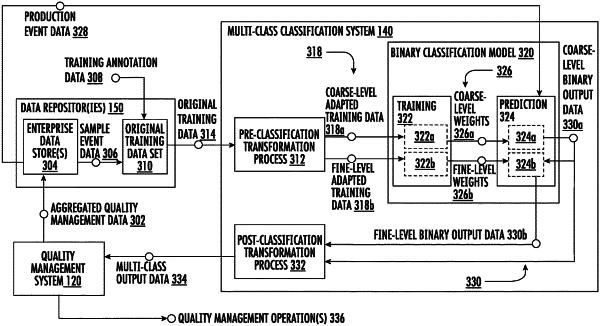| CPC G06F 18/2431 (2023.01) [G06F 16/906 (2019.01)] | 16 Claims |

|
1. An apparatus comprising at least one processor and at least one non-transitory memory comprising program code stored thereon, wherein the at least one non-transitory memory and the program code are configured to, with the at least one processor, cause the apparatus to at least:
transform an original training data set corresponding to a multi-class classification task into at least two adapted training data sets each corresponding to a binary classification task, the at least two adapted training data sets including a coarse-level adapted training data set and at least one fine-level adapted training data set, wherein a coarse-level instance of a binary classification model configured to perform the binary classification task is trained based at least in part on the coarse-level adapted training data set, and at least one fine-level instance of the binary classification model is trained based at least in part on, respectively, each at least one fine-level adapted training data set, wherein the original training data set comprises a multi-class classification of training objects each into an original classification set of at least three original classification sets, and wherein the coarse-level adapted training data set comprises a binary classification of the training objects from the original training data set each into one of:
a majority classification set corresponding to a particular original classification set of the at least three original classification sets into which a largest proportion of the training objects are classified in the original training data set relative to other original classification sets of the at least three original classification sets; and
a non-majority classification set representing a combination of the other original classification sets of the at least three original classification sets other than the particular original classification set to which the majority classification set corresponds;
transform binary output data generated with respect to an input data set using the trained coarse-level instance of the binary classification model and the trained at least one fine-level instance of the binary classification model into multi-class output data corresponding to the multiclass classification task; and
cause performance of at least one enterprise management operation based at least in part on the multi-class output data.
|